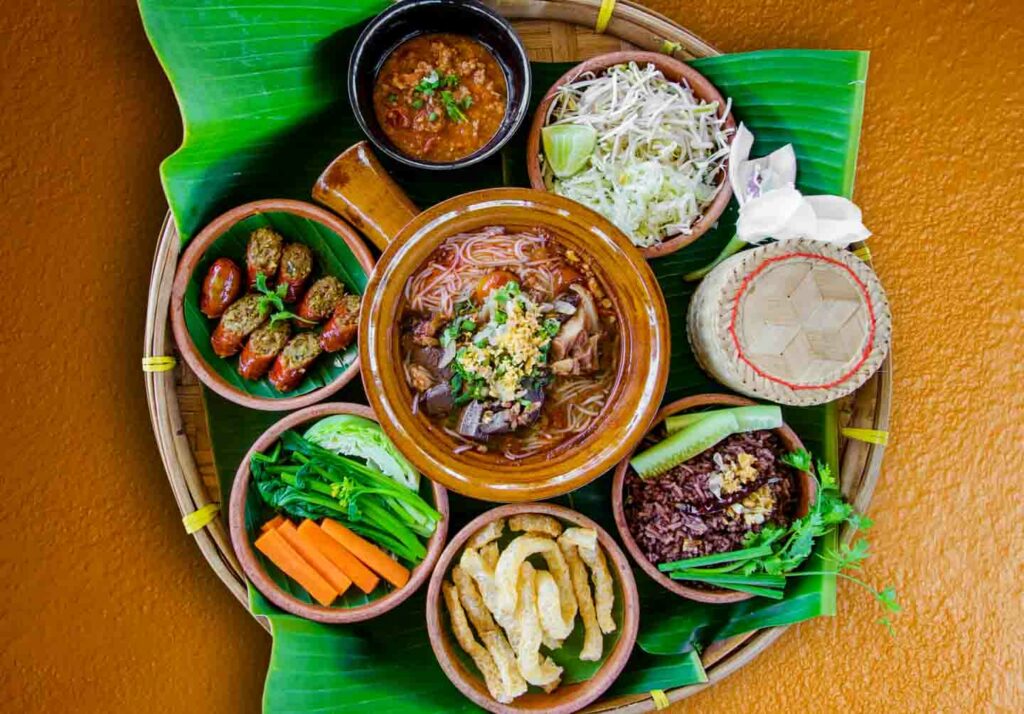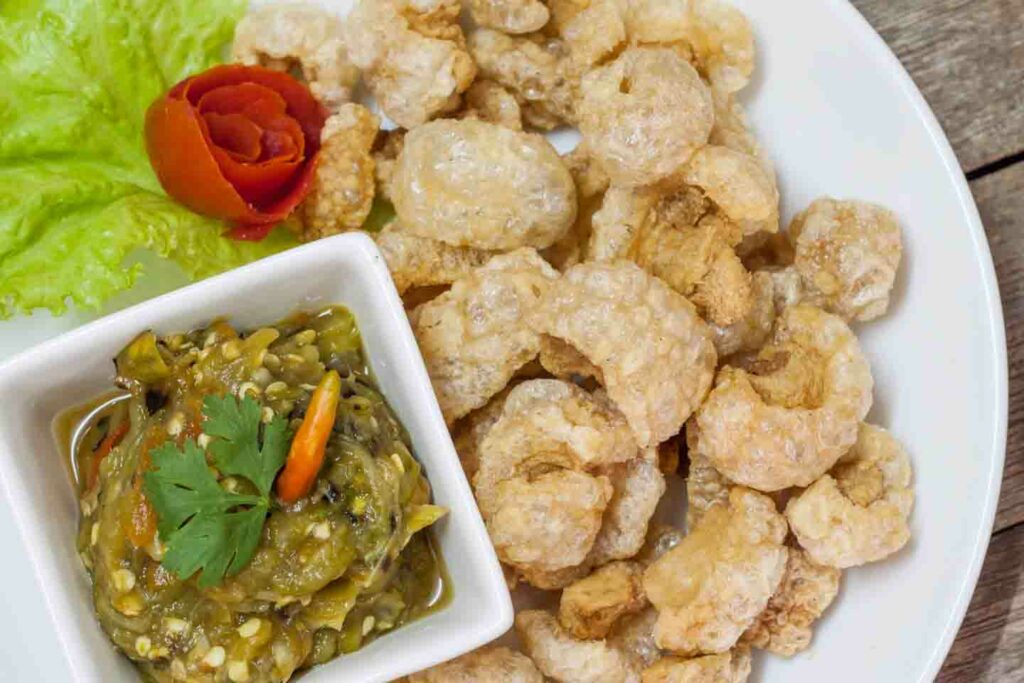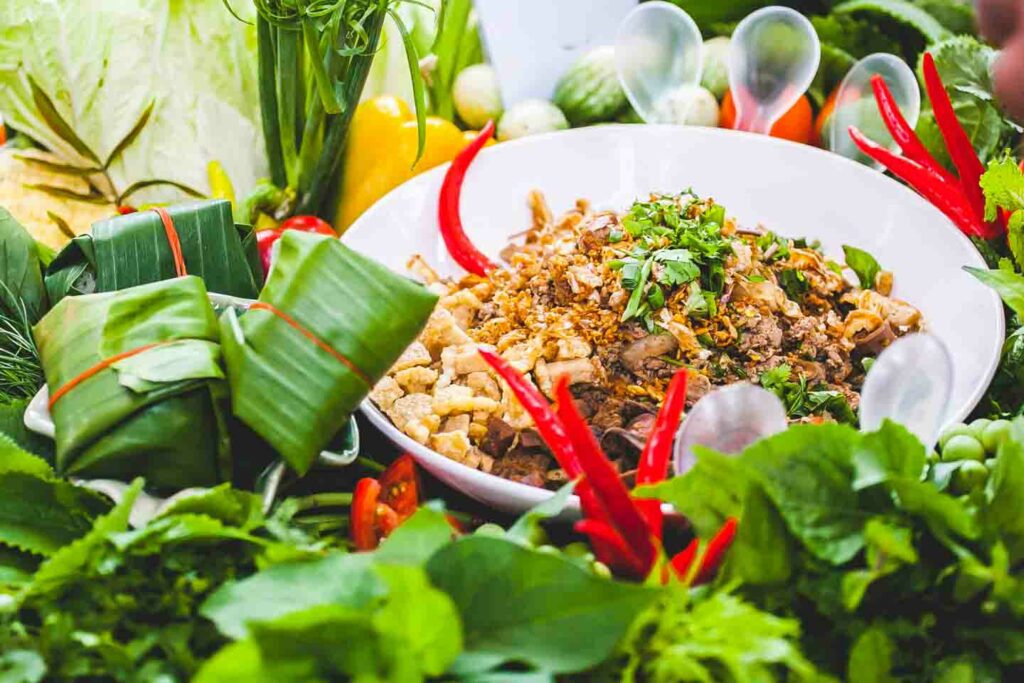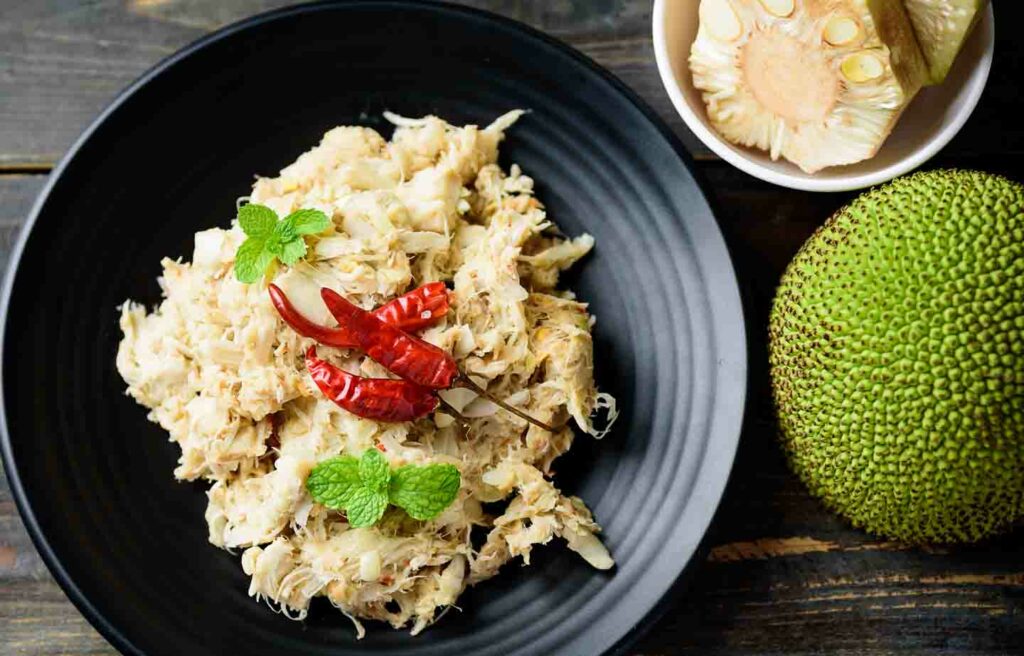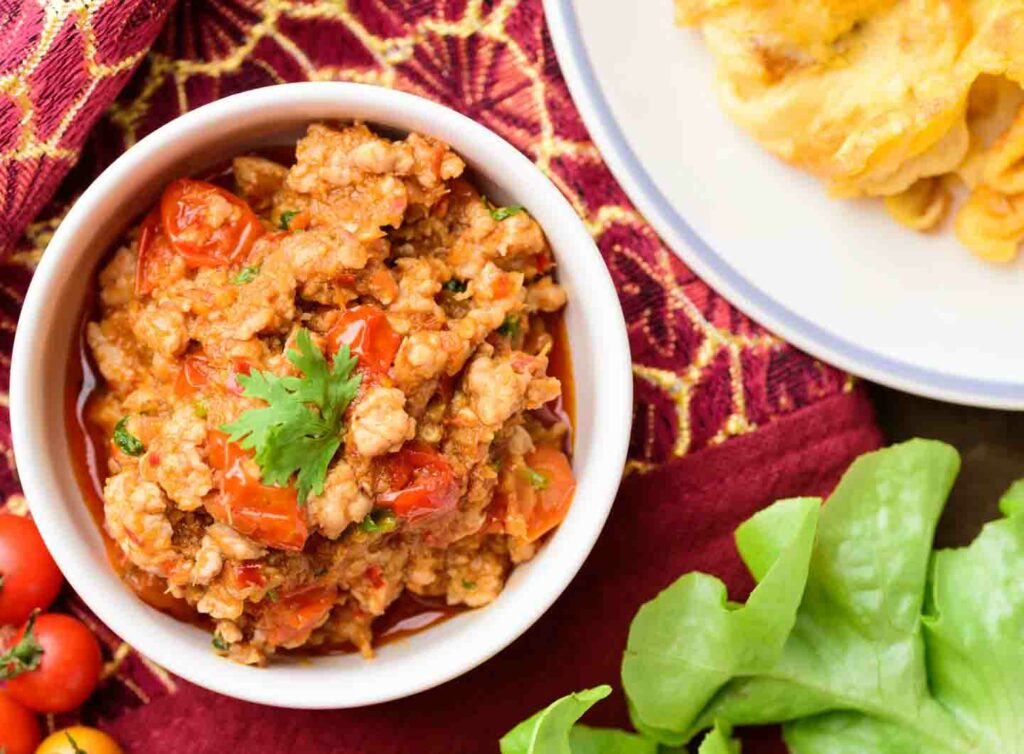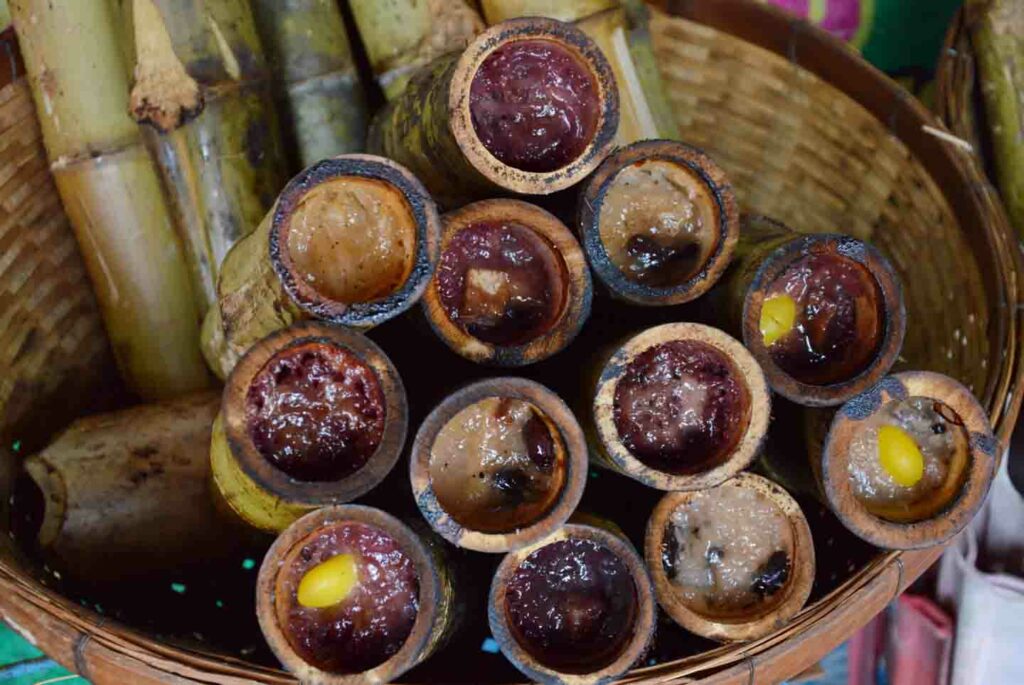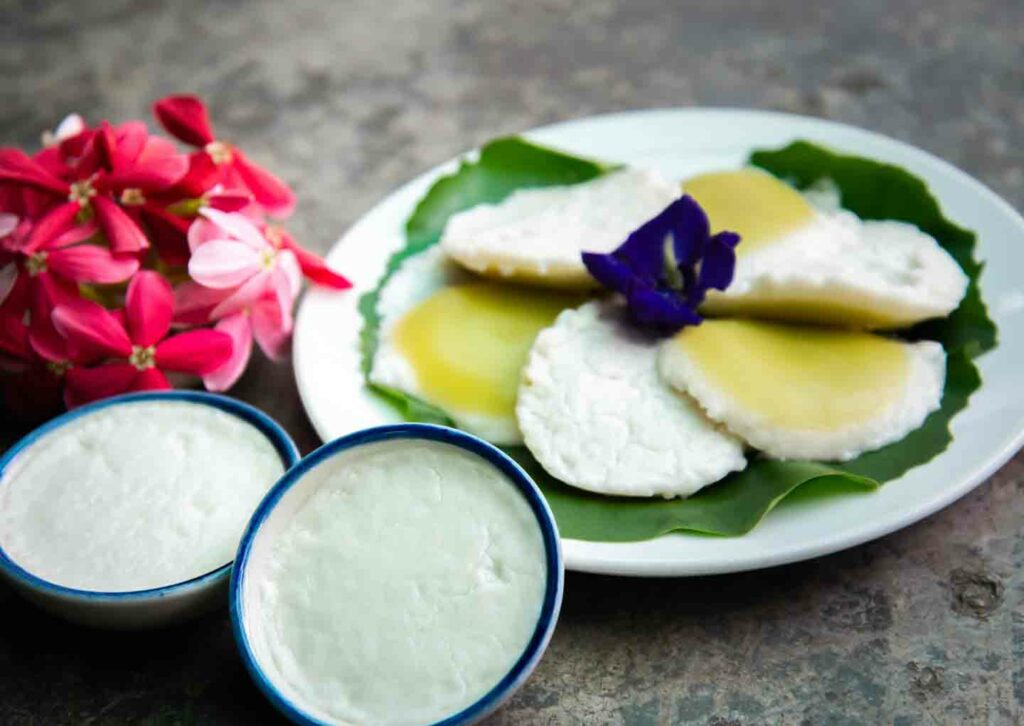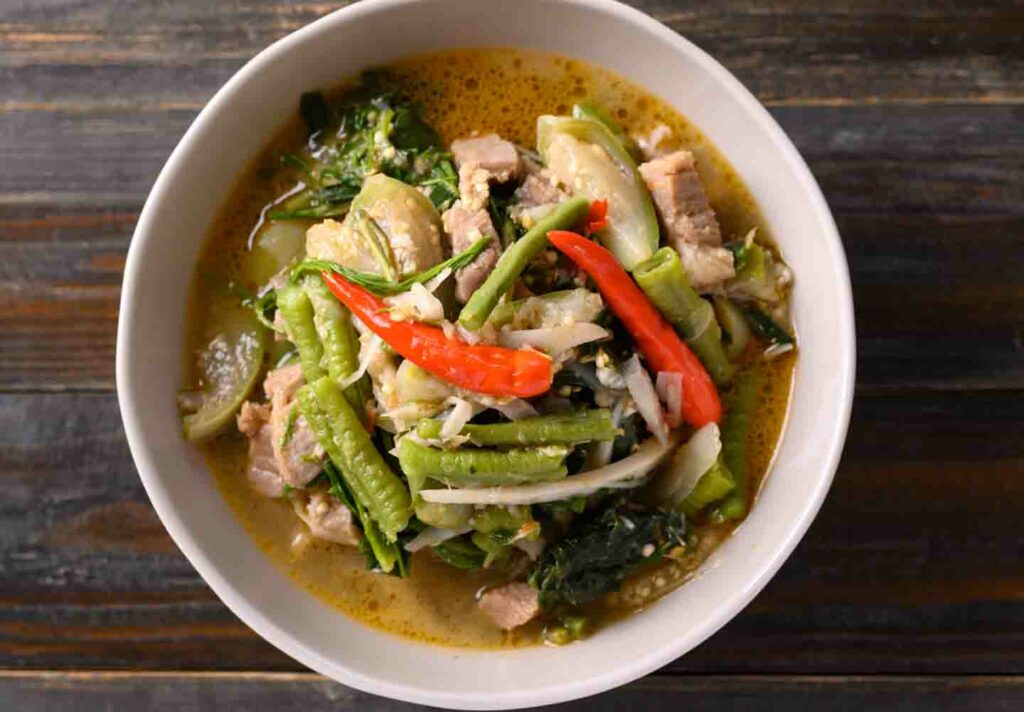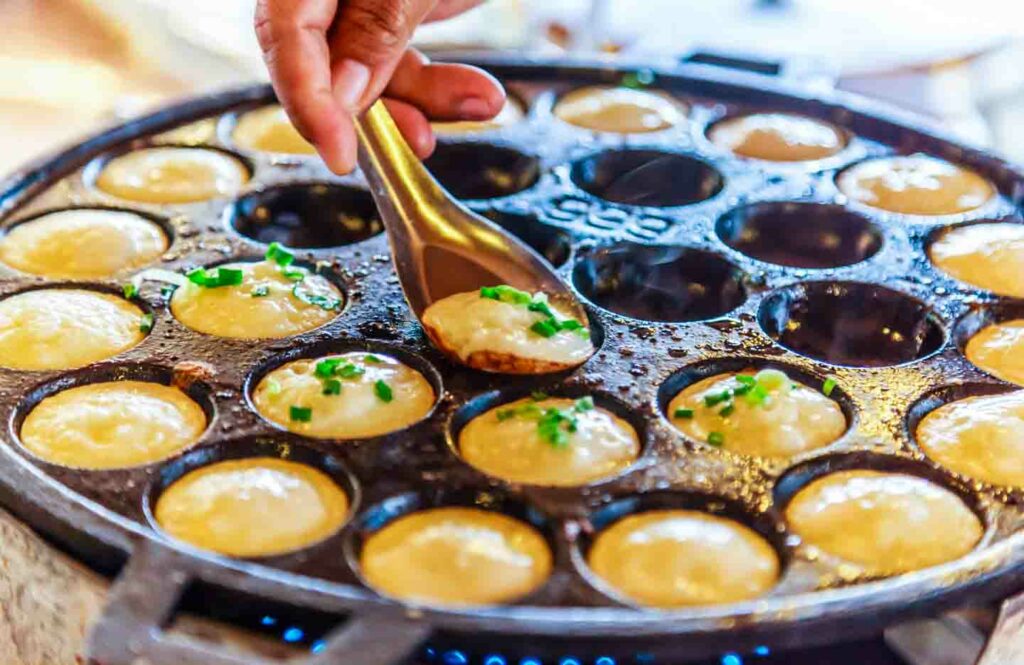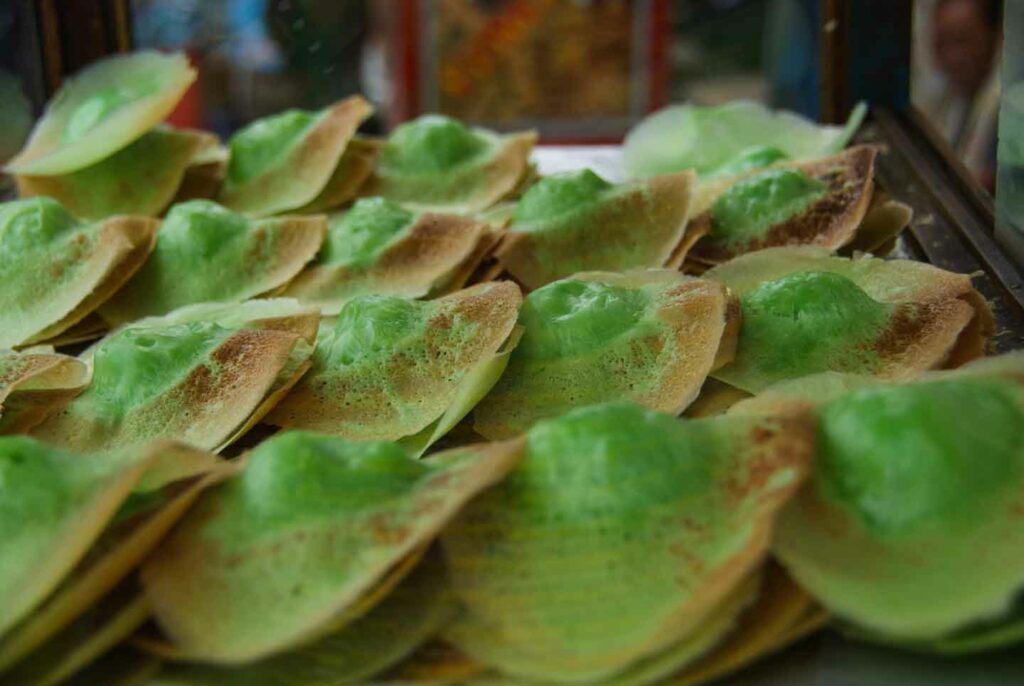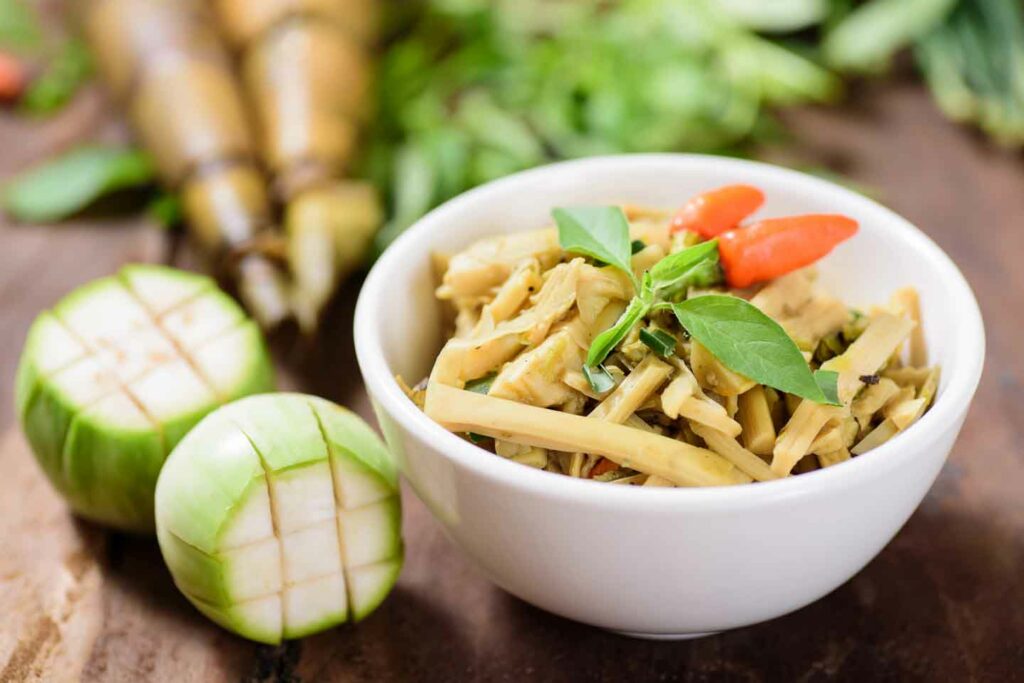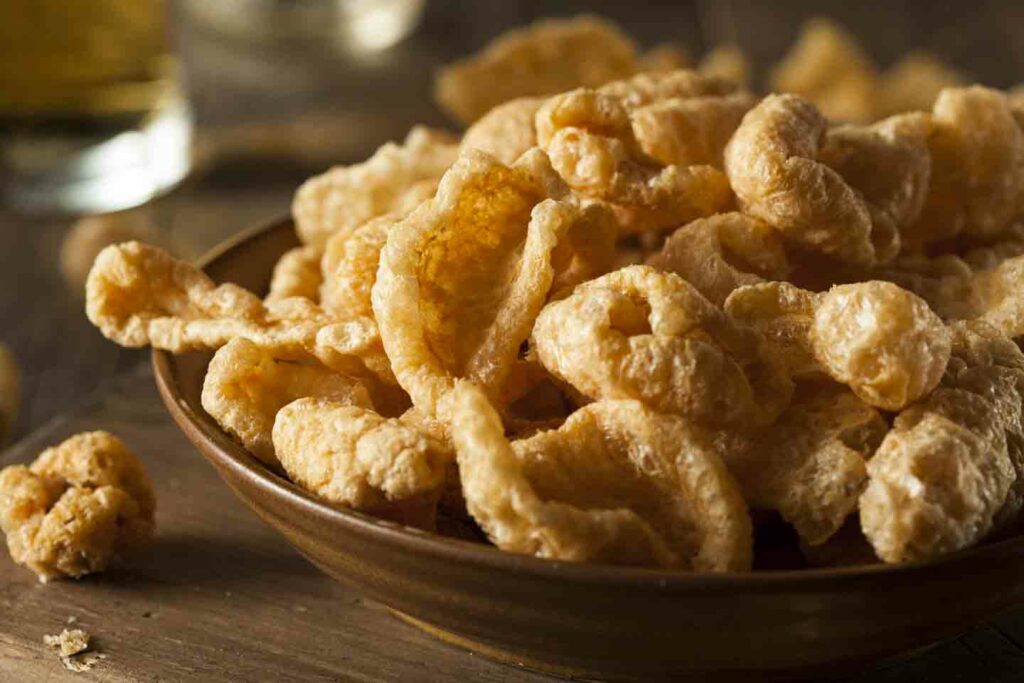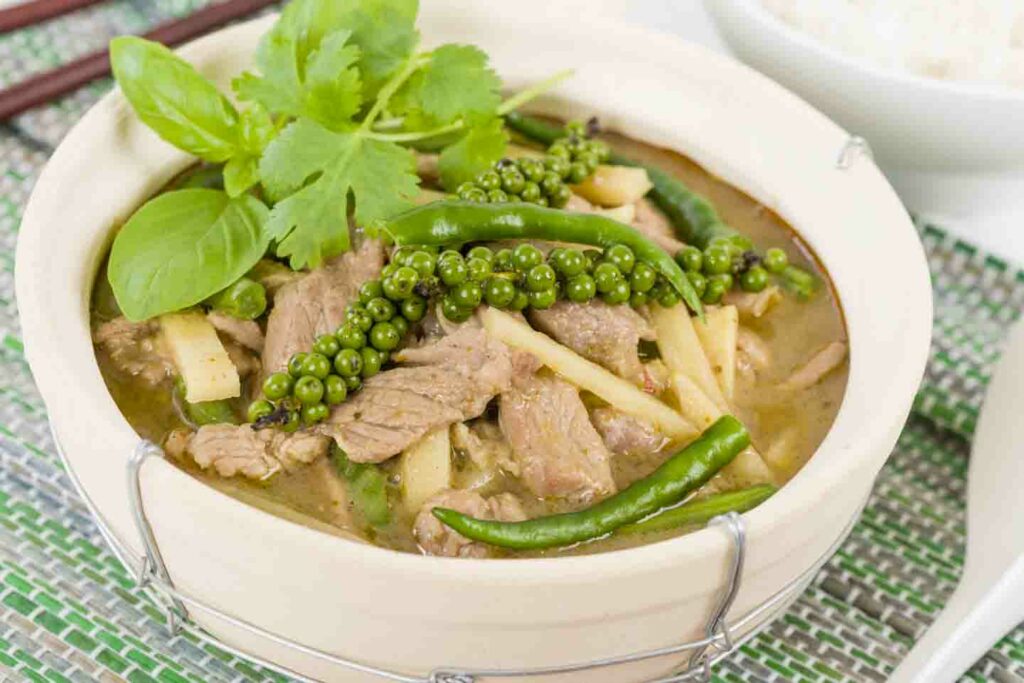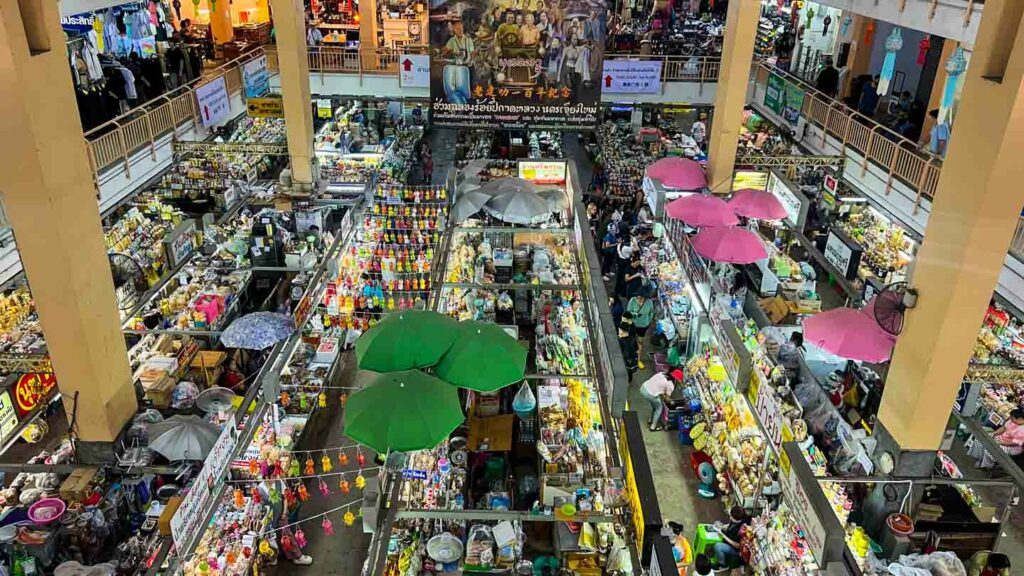Chiang Mai foods aren’t just about khao soi—these dishes will change everything you think you know about Thai food.
Thailand may seem like a small country but each region has its own flavors, traditional dishes and outside influences.
Tourists often start in Bangkok and eat plenty of pad thai, green curry and papaya salad thinking they know traditional Thai food.
But Chiang Mai food is different.
When you come to northern Thailand it’s best to forget everything you know about Thai food. It’s different here and so delicious.
To kick things off, it’s always great to start at the local market.
Northern Thai Cuisine
Northern Thai food has its own unique identity and flavors. Lanna (Northern Thai) culture, with influences from neighboring Myanmar and China, shapes Northern Thai cooking.
This results in dishes like Khao Soi, which has roots in Chinese Muslim cuisine.
The region’s cooler climate and mountains influence the ingredients used. You’ll find more root vegetables, bitter herbs and wild greens in Northern dishes.
- Sticky rice, not jasmine rice, is the staple in Chiang Mai. It’s served with most meals and used in many desserts.
- Less coconut milk. While it’s common in Central and Southern Thai cuisine, it’s not the same with Chiang Mai food. Instead, Northern dishes often have a herbaceous and earthy flavor profile.
- Less spicy! Chiang Mai foods tend to be less spicy than Southern Thai cuisine. It focuses more on bitter and sour flavors.
- Fermented foods and dried spices play a bigger role in Northern Thai cooking. Makhwaen, a local pepper, and mara, a bitter melon, are common in Chiang Mai but rare in Bangkok.
- Grilling and steaming are popular cooking methods in the North. You’ll find more grilled sausages and herb-stuffed, steamed dishes than in other regions.
Traditional Chiang Mai Foods
The best food in Chiang Mai isn’t just about taste, it’s about experiencing the local culture. These dishes represent centuries of culinary tradition and innovation..
As you explore Chiang Mai’s food scene, keep an open mind and a hungry stomach.
Each dish tells a story of the region’s agricultural abundance, cultural influences and culinary ingenuity.
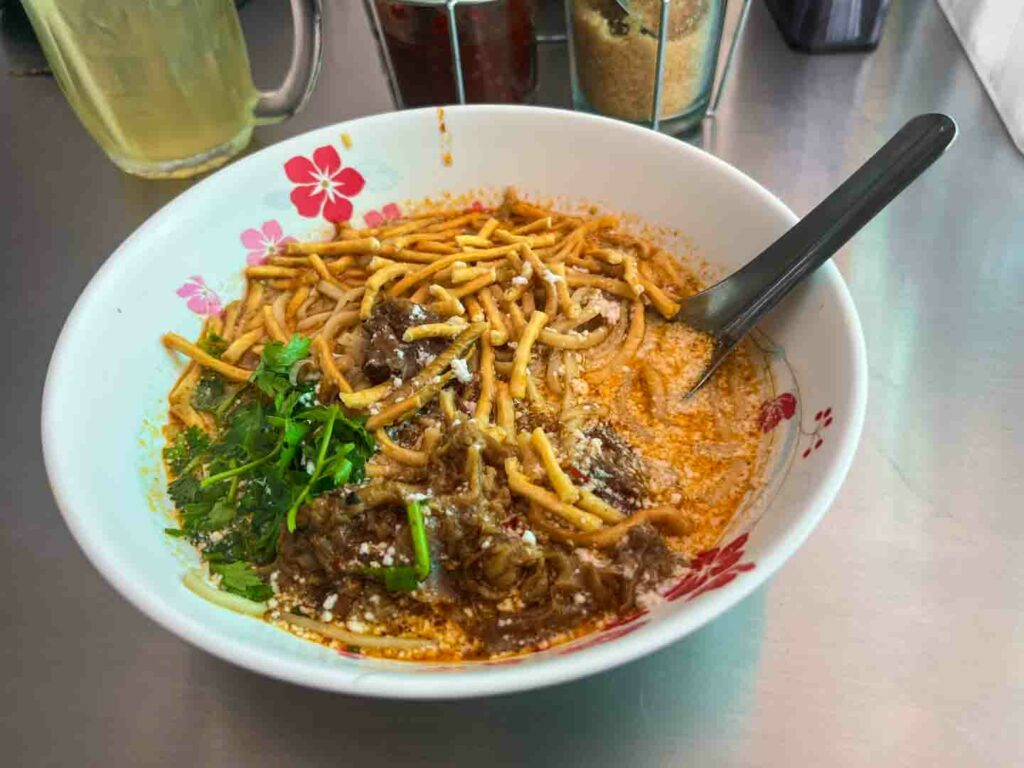
Khao Soi | ข้าวซอย
Khao soi maybe the most popular food in Thailand, perhaps tied with pad thai. And it’s originally from the north.
This coconut curry noodle soup has a rich, creamy broth and two types of egg noodles. The dish combines boiled noodles swimming in the curry and crispy fried noodles on top.
Typically served with chicken or beef, it’s garnished with pickled mustard greens, shallots and lime.
Khao Soi’s origins trace back to Chinese Muslim influences, blending local flavors with imported spices. It’s a lunchtime favorite among locals and a must-try for visitors exploring Chiang Mai’s food scene.
Where to Try Khao Soi: Visit Khao Soi Islam on Hilal Street next to the night market. It features the original recipe. From there you can see how the recipe deviates in other Northern Thai cities like Chiang Rai and Mon Jam’s Hmong version.
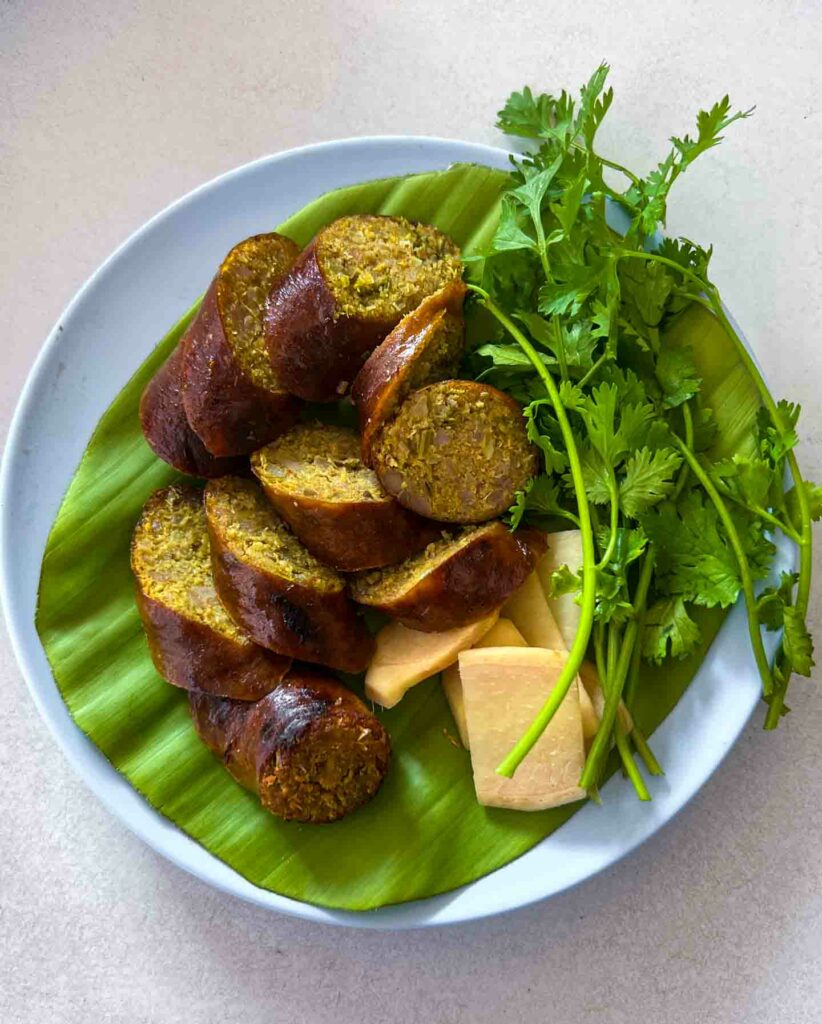
Sai Ua | ไส้อั่ว
Sai Ua is a tasty Northern Thai sausage that’s a staple of Chiang Mai street food.
Unlike anything you’ve had before, this pork sausage is bursting with herb-packed flavor. It is seasoned with lemongrass, kaffir lime leaves, chilies and galangal. The mixture is stuffed into pork intestines and grilled to perfection.
Unlike other sausages, this Chiang Mai sausage is not greasy and yet isn’t dried out.
Sai ua is often eaten as a snack or served with sticky rice as part of a larger meal. Its distinctive aroma and taste set it apart from other Thai sausages, making it a true Chiang Mai specialty.
Fruit in Thailand
Khao Kha Moo | ข้าวขาหมู
Chiang Mai food features so much pork, because the quality is so good. Khao kha moo is a comforting dish of stewed pork leg over rice.
The pork is slow-cooked in a mixture of soy sauce, sugar and spices until it’s fall-off-the-bone tender. It’s typically served with a boiled egg, pickled mustard greens and a spicy chili sauce.
Khao kha moo is a popular street food in Chiang Mai, often sold from carts with distinct red lanterns. The dish showcases the Chinese influence on Northern Thai cuisine.
Nam Prik Noom | น้ำพริกหนุ่ม
Nam prik noom is a spicy green chili dip that’s a cornerstone of Northern Thai cuisine.
Made from roasted green chilies, shallots and garlic, it’s pounded into a chunky paste. The dip is served with steamed vegetables, pork rinds or sticky rice.
It reminds me of roasted poblano salsas in Mexico. It’s so tasty on everything.
Nam prik noom’s smoky flavor comes from the charring of ingredients before they’re mashed together. It’s a common sight at Chiang Mai markets and an essential part of any traditional Lanna meal.
Gaeng Hung Lay | แกงฮังเล
Gaeng hung lay is a rich, aromatic pork curry that’s a staple of Chiang Mai cuisine.
This Burmese-influenced dish features tender pork belly slow-cooked with ginger, tamarind and turmeric. The curry is sweetened with palm sugar and given depth by fermented garlic and shrimp paste.
Gaeng hung lay is often served at special occasions and festivals in Chiang Mai. It’s a great example of how curry changes from the south to the north.
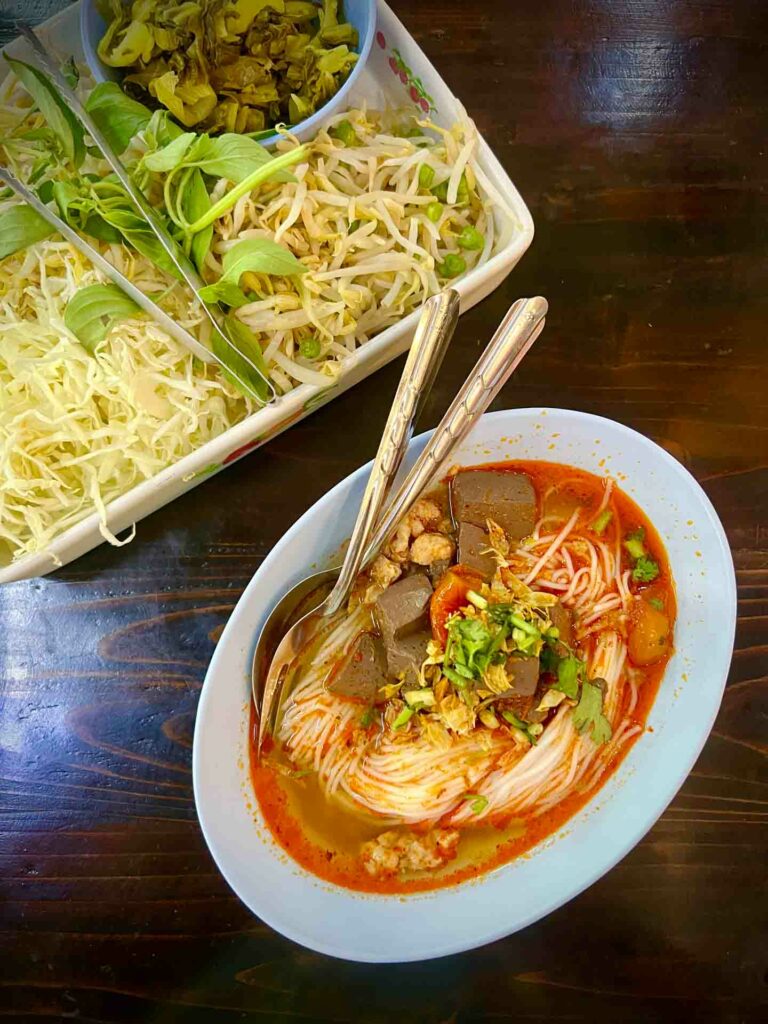
Khanom Jeen Nam Ngiaw | ขนมจีนน้ำเงี้ยว
Khanom jeen nam ngiaw is a hearty noodle soup that’s a Chiang Mai breakfast favorite. The dish features thin rice noodles in a spicy tomato-based broth with pork or beef.
It typically contains cubes of coagulated pork blood and pork ribs. The broth is flavored with dried cotton flowers, giving it a distinct taste.
Khanom Jeen Nam Ngiaw showcases the Shan influence on Chiang Mai cuisine, reflecting the region’s diverse culinary heritage.
Where to Try Khanom Jeen Nam Ngiaw: Head to the second floor of the Waroros Market and eat with locals. Don’t be afraid of the coagulated pork blood, It tastes like pork and melts in your mouth.
Kaeng Khanun | แกงขนุน
Kaeng khanun is a unique northern curry made with unripe jackfruit, a common ingredient in Chiang Mai kitchens.
But it’s not vegetarian. The curry includes pork belly, cherry tomatoes and herbs like holy basil and kaffir lime leaves.
Kaeng khanun has a slightly sour taste balanced by the richness of pork fat. It’s typically eaten with rice and showcases the Lanna region’s knack for using local ingredients.
This dish is less common in other parts of Thailand, making it a true Chiang Mai specialty you must try.
Larb Khua | ลาบคั่ว
Larb khua is a Northern Thai version of the popular minced meat salad. Unlike its Isaan counterpart, Chiang Mai’s Larb Khua is cooked and uses no lime juice.
The meat is stir-fried with a dry spice mix including cumin, long pepper and star anise.
This gives the dish a distinctly earthy flavor that you don’t find in other larb. Larb Khua is often served with sticky rice and raw vegetables.
Larb Moo Recipe
Aeb Pla | แอ๊บปลา
if you don’t like pork, don’t worry traditional Lanna food is not just pork.
Aeb pla is a traditional Chiang Mai dish of herb-wrapped fish. The fish is mixed with a paste of chilies, lemongrass, kaffir lime leaves and other spices.
This mixture is wrapped in banana leaves and grilled over charcoal. The result is a fragrant, flavorful packet of fish with a slightly smoky taste.
It’s a great option when you want something a bit lighter but still full of flavor. It showcases the region’s love for fresh herbs and grilled flavors.
Tam Kanun | ตำขนุน
Tam kanun is a spicy salad made from young jackfruit. Yet again, this is not a vegetarian dish in Chiang Mai. The jackfruit is boiled, shredded and mixed with herbs, chilies and pork rinds.
This dish has a unique texture and tangy flavor that sets it apart from other Thai salads. Tam kanun is often served as a side dish or as part of a larger Northern Thai spread.
Kaeng Ho | แกงโฮะ
Kaeng ho is a dry curry unique to Chiang Mai and the surrounding Lanna region. It does not use coconut milk so it’s a great example of a northern Thai style curry.
This dish combines vegetables, meat and glass noodles in a flavorfuhl, thick curry sauce.
Common ingredients include bamboo shoots, green beans and pork. The curry paste is made with dried chilies, shallots and garlic, giving it a rich, spicy flavor.
Like most dishes in the north, kaeng Ho is typically served with rice.
Nam Prik Ong | น้ำพริกอ่อง
I love dips and so Northern Thai food is such a treat because it’s a dip culture. Nam prik ong is a beloved Chiang Mai dip made from ground pork and tomatoes.
This savory, slightly sweet dip is flavored with garlic, shallots and dried chilies. It’s often served with crisp vegetables and pork rinds for dipping.
Nam prik ong is a staple in Northern Thai households and common at local markets.
Khao Lam | ข้าวหลาม
Khao lam is a sweet treat that’s a popular street food in Chiang Mai.
It’s made by filling bamboo tubes with sticky rice, coconut milk and sometimes black beans. The bamboo is then roasted over charcoal, infusing the rice with a subtle smoky flavor.
Khao lam is often eaten as a snack or dessert. I love that this Chiang Mai food shows how creative people were by using natural materials as cooking vessels.
Khanom Tuay | ขนมถ้วย
Sweet, but not too sweet, food in Chiang Mai is common. People love desserts here. Khanom tuay is a delicate coconut pudding that’s a popular dessert in Chiang Mai.
The dessert has two layers: a soft coconut cream top and a firmer pandan-flavored base. It’s traditionally steamed in small ceramic cups, giving it its name which means “cup dessert.”
Khanom tuay is often sold by street vendors and is a common offering at temples. Its subtle sweetness makes it a perfect end to a spicy Northern Thai meal.
Kaeng Khae | แกงแค
Kaeng khae is a herb-rich soup that’s a staple of Chiang Mai home cooking. It’s great when you are feeling like you need more vegetables.
This clear soup is packed with local vegetables and herbs like climbing wattle, cowslip creeper and garcinia leaves. Pork or chicken is often added for protein.
Kaeng Khae has a slightly bitter taste balanced by the sourness of tamarind. It’s believed to have medicinal properties and is often eaten during the hot season.
Khanom Krok Nuea | ขนมครกเนื้อ
Khanom krok nuea is a savory version of the popular Thai coconut pancake.
In this Chiang Mai variation, the pancakes are filled with a mixture of minced pork, shrimp and vegetables.
The batter is made from rice flour and coconut milk, creating a crispy exterior and soft interior. Khanom krok nuea is a popular breakfast item and snack in Chiang Mai markets.
Bangrak Local’s Chinatown
Kaeng Yuak | แกงหยวก
Kaeng yuak is a unique curry made with banana tree stems, a specialty of Chiang Mai. It’s one of the Chiang Mai foods you definitely need to seek out because banana tree stems are so unique.
The curry features chunks of pork and banana tree pith in a spicy, sour broth. The banana stem gives the dish a tender, slightly crunchy texture.
Kaeng yuak is often served with rice and showcases Northern Thailand’s knack for using every part of a plant. This curry is less common outside of Chiang Mai, making it a true local delicacy.
Khanom Fak Bua | ขนมฝักบัว
Khanom fak bua is a Chiang Mai dessert made with pandan leaves.
This sweet treat consists of small parcels of sticky rice dough flavored with pandan, filled with shredded coconut and sugar.
The parcels are wrapped in pandan leaves and steamed.
The result is a fragrant, slightly chewy dessert with a sweet coconut filling, almost like a stuffed pancake.
It’s also a popular Indonesian food called kue cucur
Ayuthhaya Food
Khao Ngiao | ข้าวเงี้ยว
Khao ngiao is a Shan-influenced rice dish popular in Chiang Mai. It features rice cooked with pork blood, giving it a distinctive reddish color.
The dish is steamed inside a banana leaf and served with pork rinds, fried garlic and a spicy dipping sauce.
Khao ngiao is another dish that shows the influence of neighboring Myanmar on local Chiang Mai foods.
Yum Nor Mai | ยำหน่อไม้
Yum Nor Mai is a spicy bamboo shoot salad popular in Chiang Mai. It features thinly sliced, boiled bamboo shoots mixed with ground pork, dried chilies and fresh herbs.
The salad is dressed with a tangy mixture of fish sauce, lime juice, and a touch of sugar. Shallots, cilantro, and scallions add freshness and crunch.
Yum Nor Mai showcases the abundant bamboo in Northern Thailand’s forests.
Its balance of spicy, sour, and savory flavors is characteristic of Lanna cuisine. This refreshing dish is often enjoyed as a side or light meal in Chiang Mai.
Thai Bus Food Tour in Bangkok
Khao Perp | ข้าวเปิ๊บ
Khao perp is a traditional Chiang Mai snack with Shan influences. It’s made from glutinous rice flour mixed with water and salt, spread thin and grilled.
The result is a crispy, slightly chewy rice cracker. Khao perp is often served with a dipping sauce made from ground pork, tomatoes, and chili.
This snack is commonly found in local markets and street food stalls in Chiang Mai. It’s a unique dish that showcases the blend of Lanna and Shan culinary traditions in Northern Thailand.
Cap Moo | แคบหมู
Cap moo is Chiang Mai’s version of pork rinds, a beloved local snack. These crispy pork skins are fried until golden and puffy.
In Chiang Mai, they’re often seasoned with local spices like cumin and chili. Cap moo is eaten on its own as a snack or used as a crunchy topping for salads and curries.
I like to eat it with one of the many traditional dips here.
Kaeng Om | แกงอ่อม
Kaeng om is a herb-packed soup that’s a staple of Northern Thai cuisine. This aromatic dish combines meat (usually pork or chicken) with a variety of local herbs and vegetables.
The soup gets its distinctive flavor from dill, lemongrass and kaffir lime leaves. Kaeng om is often eaten with sticky rice and is considered a comfort food in Chiang Mai homes.
Kaeng Pa | แกงป่า
Kaeng pa, which means “jungle curry,” contains no coconut milk, resulting in a thin, watery consistency.
It’s typically made with wild boar, though pork or chicken are common substitutes. The curry paste includes local herbs like fingerroot, lemongrass, kaffir lime leaves, and an abundance of fresh chilies.
Bamboo shoots, eggplant, and other foraged vegetables are often added.
Kaeng Pa is known for its intense heat and complex herbal flavors. It represents the resourcefulness of forest dwellers and hill tribes in the Chiang Mai region.
Remember, part of the joy of discovering Chiang Mai’s food scene is the adventure of finding these dishes.
Don’t be afraid to ask locals for recommendations or venture into small, family-run eateries. The best culinary experiences often come from unexpected places.
Chiang Mai Food FAQs
Khao Soi is Chiang Mai’s signature dish. This coconut curry noodle soup with crispy noodles on top is a local favorite and a must-try for visitors.
Yes, many dishes can be made vegetarian. Try Tam Kanun (young jackfruit salad) or Kaeng Khae (herbal soup) without meat. Always ask if fish sauce is used.
The Night Bazaar and Sunday Walking Street are goodfor street food but there’s a lot of tourists. For a local experience, try the local markets such as Waroros or Chang Phueak Gate market, known for its khao kha moo.
Chiang Mai food can be quite spicy. Dishes like Nam Prik Noom are particularly hot. You can usually request less spicy versions of most dishes.
Sai Oua (Northern Thai sausage) or Nam Prik Ong (chili dip) make great souvenirs. Look for vacuum-packed versions that are safe for travel.
